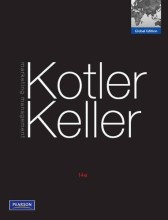Summary: Cultural Industries
- This + 400k other summaries
- A unique study and practice tool
- Never study anything twice again
- Get the grades you hope for
- 100% sure, 100% understanding
Read the summary and the most important questions on Cultural Industries
-
1 Cultural Industries
This is a preview. There are 13 more flashcards available for chapter 1
Show more cards here -
Define cultural goods and services characteristics (Throsby)
Require some input of human creativity, they are vehicles for symbolic messages and contain intellectual property -
6 economic approaches in analyzing cultural industries (Throsby)
1. Industrial organization theory
2. Value chain analysis
3. inter-industry analysis
4. Locational analysis
5. Contract theory and property rights
6. Trade and development -
Name an argument for market protection and an argument against market protection in the market for paintings in the Golden Ages (De Marchi & van Miegroet)
Argument for (old masters and guilds): entry barriers protect prices and quality of the artistic works
Argument against (non guild members and art dealers: entry barriers are a halt to innovation and market development -
What determines the price according to Mandeville (De Marchi & van Miegroet)
1. Name of the master, 2. stage of artist's career (and fashion), 3. scarcity of artist's work and 4. status of the owners and being part of great collections -
Name 3 big changes in the 18th century music industry in Vienna (Baumol & Baumol)
1. Private patronage to market mechanism (Kapelles were abandoned for profesionnal musicians)
2. Stylistic innovation, simpler galant replaced contrapuntal
3. Technological innovation, piano forte replaced other keyboard instruments -
Define a diachronic dialectic (Peterson & Anand)
Interaction over time between large firms and smaller firms, shaping the industry. -
Name the following changes of a dialectic (Peterson & Anand)
1. Large firms producing popular cultural goods attempt to structure consumer desire
2. Individuals choose among the goods to express themselves
3. 'Different' people seek out other 'rebels' and distinct with other cultural choices
4. Authorities first ignores this, but later will defy the norms of behaviour
5. The reaction of the authorities diffusely disaffected people who emulate the superficial style of resistance
6. The final stage is the first of the next style -
Name the six facet model of cultural production (Peterson & Anand)
1. Technology
2. Organizational structure
3. Occupational careers
4. Marketing
5. Industry structure
6. Law and regulation -
Name the 3 transaction problems in the early days of radio (Leblebici et al.)
1. Radio spectrum (problem of the commons)
2. Radio equipment (problem with patent and protection)
3. Radio signals (problem with uncertainty in valuing broadcasting) -
Name the 3 phases in the radio industry (Leblebici et al.)
1. Age of the manufactures (1920-1934)
2. Age of radio networks (1935-1950)
3. Age of independent radio (1950-1965)
- Higher grades + faster learning
- Never study anything twice
- 100% sure, 100% understanding





























